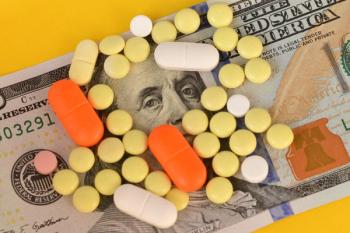
New Options for Sickle Cell Disease
Despite sickle cell disease's (SCD) lower profile, 3 new SCD drugs were approved in the last 3 years, with 2 approvals occurring in late 2019
Approximately 100,000 people living in the United States have sickle cell disease (SCD)-double the number of patients who have hemophilia and cystic fibrosis (CF) combined; yet, SCD receives far less attention and funding.
Famously known as a condition that predominates among individuals of African descent, 1 in every 365 African American babies born in the United States has the condition, according to the
“Because patient advocacy for SCD is not as effective as advocacy for other rare diseases such as CF or hemophilia, less money and resources are put in R&D as opposed to other similar genetic diseases,” said John J. Strouse, MD, PhD, associate professor of medicine at Duke University School of Medicine.
Despite SCD’s lower profile, 3 new SCD drugs were approved in the last 3 years, with 2 approvals occurring in late 2019. Until 2017, hydroxyurea was the mainstay of therapy and only treatment option for nearly 20 years. Known to reduce vaso-occlusive crises by 50% (a common adverse effect [AE] in SCD in which sickled cells get lodged in blood vessels), hydroxyurea offers convenient once-daily dosing. However, it also requires some monitoring because of the risk for hematological AEs. It is also a known teratogen.
The first of these new drugs approved, L-glutamine (Endari) is indicated to decrease acute SCD complications in children 5 years of age and older as well as adults. Available in a powder form, weight-based dosing of the amino acid ranges from 5 g to 15 g twice daily. Common AEs include constipation, nausea, headache, cough, and abdominal pain.2
On November 15, 2019, the FDA approved the third drug to treat SCD, crizanlizumab-tmca (Adakveo). Indicated for patients 16 years of age and older, the drug reduces the number of vaso-occlusive crises, resulting in ischemia and severe pain. Crizanlizumab-tmca is administered intravenously at 5 mg/kg once monthly after receiving bi-weekly doses during the month-long induction period. Patients who receive crizanlizumab-tmca therapy may experience nausea, arthralgia, back pain, and pyrexia.
On November 25, 2019, FDA approval of voxelotor (Oxbryta) marked the fourth SCD drug to enter the market. Available in 500-mg tablets, patients who receive voxelotor take it once daily with or without food in doses of 1500 mg or 1000 mg if hepatically impaired. Common AEs include headache, nausea, diarrhea, abdominal pain, rash, and fatigue.
All 3 drugs can be administered as monotherapy or concomitantly with hydroxyurea.
Strouse expressed mixed emotions about the new therapies. “Adakveo has pretty good data pretty good for decreasing ER visits at the doses studied,” he said. “I was surprised about voxeletor being approved because while it should be good at increasing hemoglobin, data on whether it decreases hospitalization, pain, or quality of life was studied but not reported.”
As with many new therapies, the 2 newest SCD drugs raise the question of access. Annual costs for both drugs fall in the low 6-figure range. L-glutamine costs $40,515, according to varying sources, whereas annual spending on a year’s supply of hydroxyurea just exceeds the $1200 mark.
More importantly, high drug costs may end up limiting access in areas where the SCD is most common, such as among the 2 populations most often affected by the disease-African American and Latin communities in the United States. Cost also brings into question access to sub-Saharan African regions where malaria is prevalent and SCD is high.
References:
1. Sickle Cell Disease (SCD). Data and Statistics on Sickle Cell Disease. CDC.
2. FDA. Endari (L-glutamine oral powder) Full Prescribing Information.
Newsletter
Pharmacy practice is always changing. Stay ahead of the curve with the Drug Topics newsletter and get the latest drug information, industry trends, and patient care tips.





























































































































